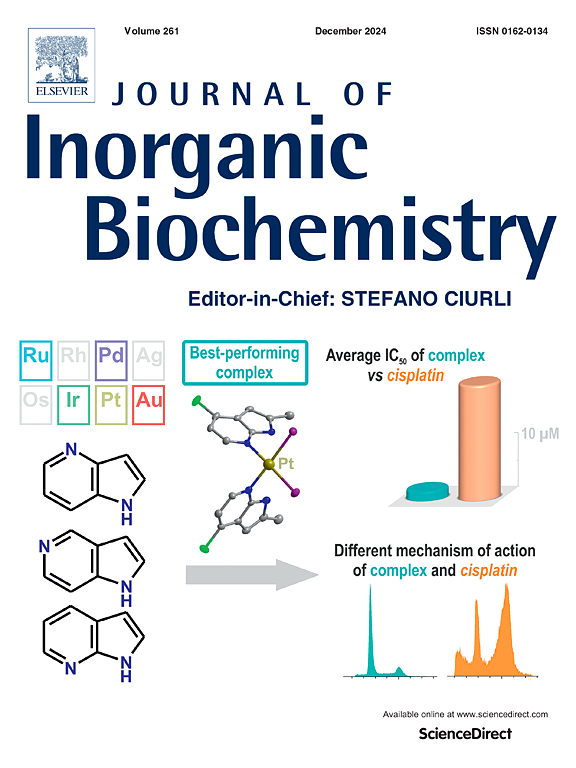内在光致发光水凝胶测量肽-铜结合亲和力
IF 3.2
2区 化学
Q2 BIOCHEMISTRY & MOLECULAR BIOLOGY
引用次数: 0
摘要
通过EDC/NHS偶联方法,对NH2修饰的内在光致发光水凝胶(iphh -NH2)进行了多肽的功能化修饰。这些肽装置结合铜的结合亲和力取决于表面功能化。特别是,铜滴定的荧光分析,以及猝灭效率和寿命测量的确定,可以评估结合常数并阐明潜在的结合机制。对具有相同的铜结合氨基酸残基(GHK)但链长不同的多肽进行了测试,结果发现,随着GHK序列距离ip - nh2表面的距离增加,结合常数降低,猝灭效率降低,而结合机制保持不变。该方法不仅为固定在生物传感器表面或预制器件上的肽提供了不改变其结构的结合常数,而且有助于生物传感器设计的优化,使其适应其预期的应用。本文章由计算机程序翻译,如有差异,请以英文原文为准。

Intrinsically photoluminescent hydrogels to measure peptides‑copper binding affinities
NH2 decorated intrinsically photoluminescent hydrogels (IPH-NH2) were functionalized with the addition of various peptides via EDC/NHS coupling method. These peptidic devices bind copper with binding affinities depending on surface functionalization. Particularly, fluorescence analysis of copper titrations, alongside the determination of quenching efficiency and lifetime measurements, allowed to assess binding constants and to elucidate the underlying binding mechanism. Various peptides, having the same copper binding amino acidic residues (GHK) but different chain lengths, were tested and it was found that increasing the distance of the GHK sequence from the IPH-NH2 surface resulted in a decrease in the binding constant, as well as a reduction in quenching efficiency, whereas the binding mechanism remained unchanged as indicated by lifetime measurements. This method not only provides binding constants for peptides immobilized on biosensor surfaces or pre-fabricated devices without altering their structure, but also contributes to the optimization of biosensor design, tailoring it to its intended application.
求助全文
通过发布文献求助,成功后即可免费获取论文全文。
去求助
来源期刊

Journal of Inorganic Biochemistry
生物-生化与分子生物学
CiteScore
7.00
自引率
10.30%
发文量
336
审稿时长
41 days
期刊介绍:
The Journal of Inorganic Biochemistry is an established international forum for research in all aspects of Biological Inorganic Chemistry. Original papers of a high scientific level are published in the form of Articles (full length papers), Short Communications, Focused Reviews and Bioinorganic Methods. Topics include: the chemistry, structure and function of metalloenzymes; the interaction of inorganic ions and molecules with proteins and nucleic acids; the synthesis and properties of coordination complexes of biological interest including both structural and functional model systems; the function of metal- containing systems in the regulation of gene expression; the role of metals in medicine; the application of spectroscopic methods to determine the structure of metallobiomolecules; the preparation and characterization of metal-based biomaterials; and related systems. The emphasis of the Journal is on the structure and mechanism of action of metallobiomolecules.
 求助内容:
求助内容: 应助结果提醒方式:
应助结果提醒方式:


